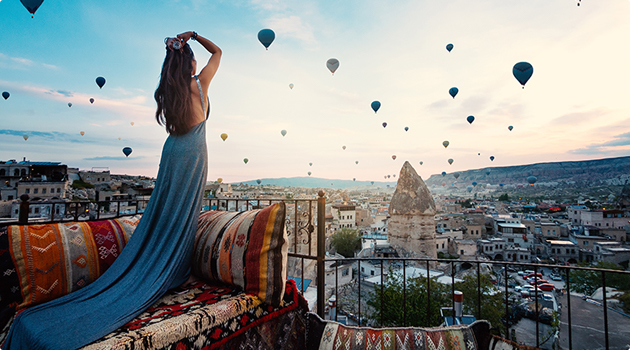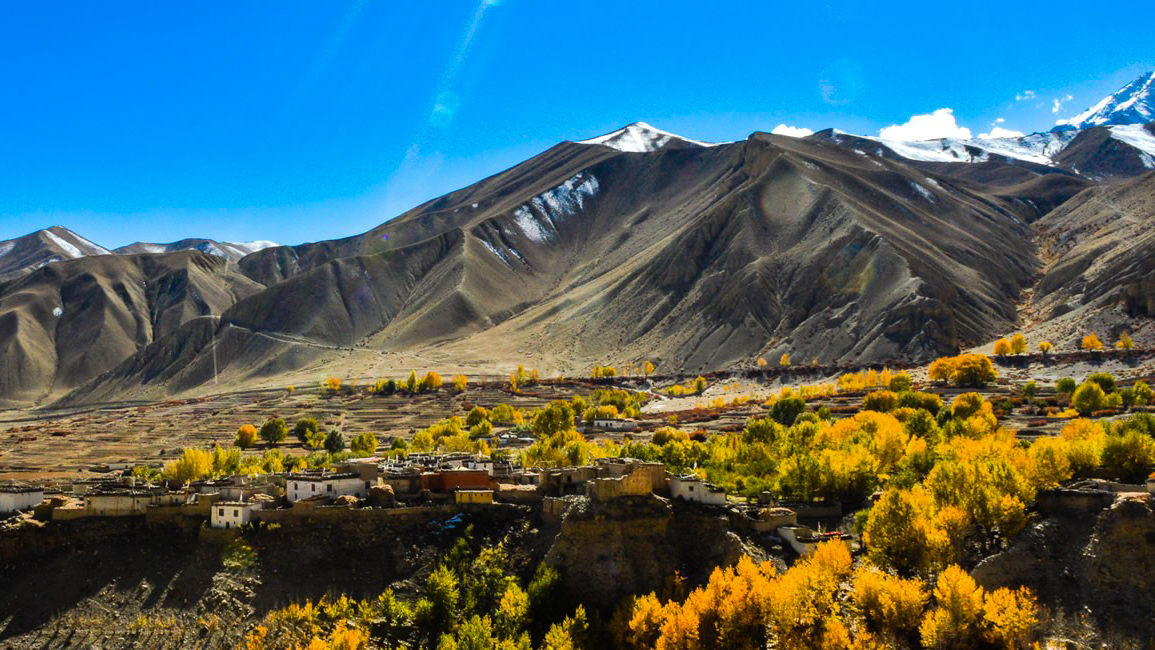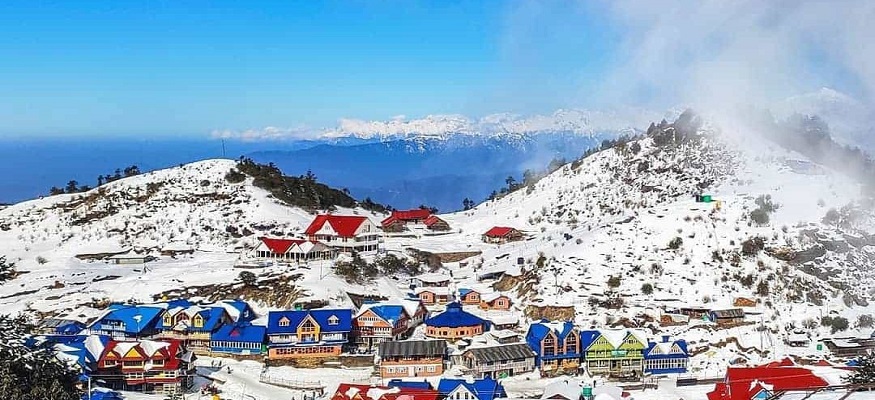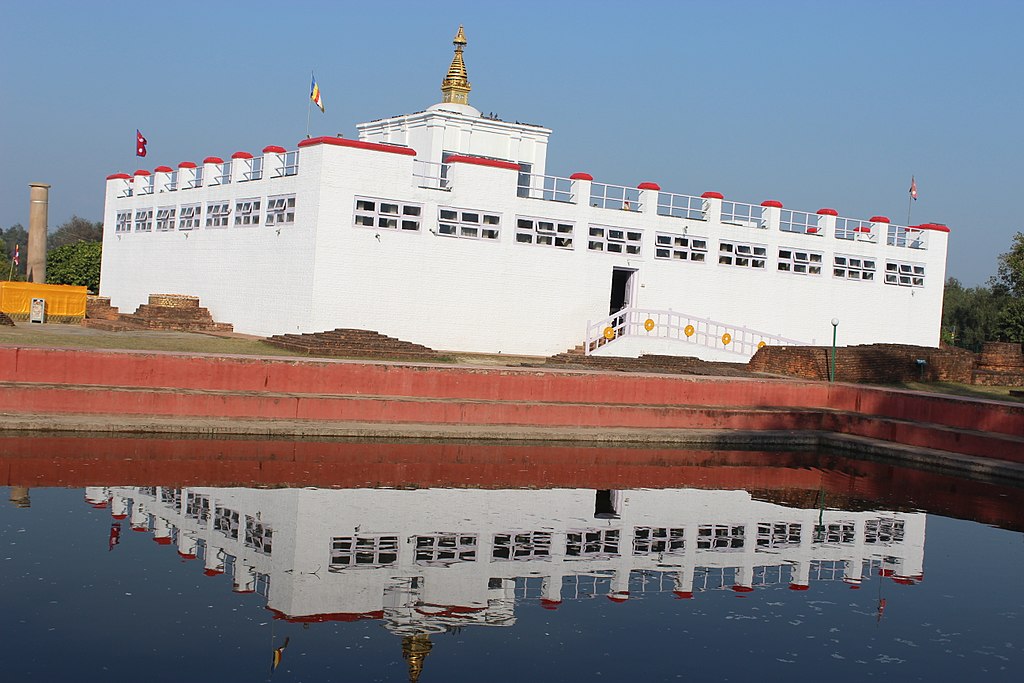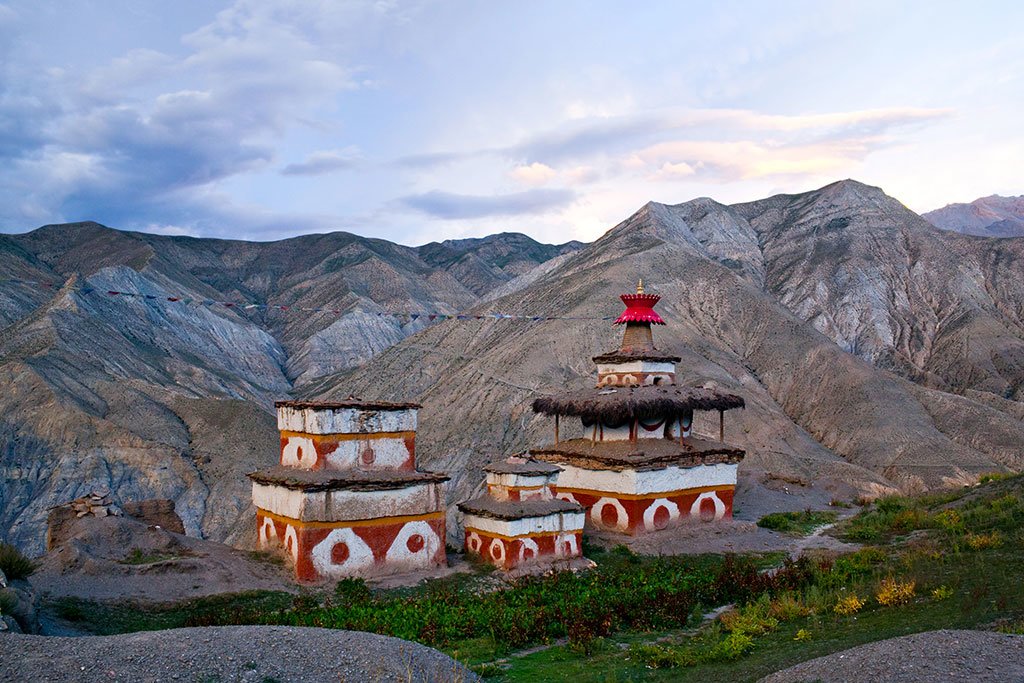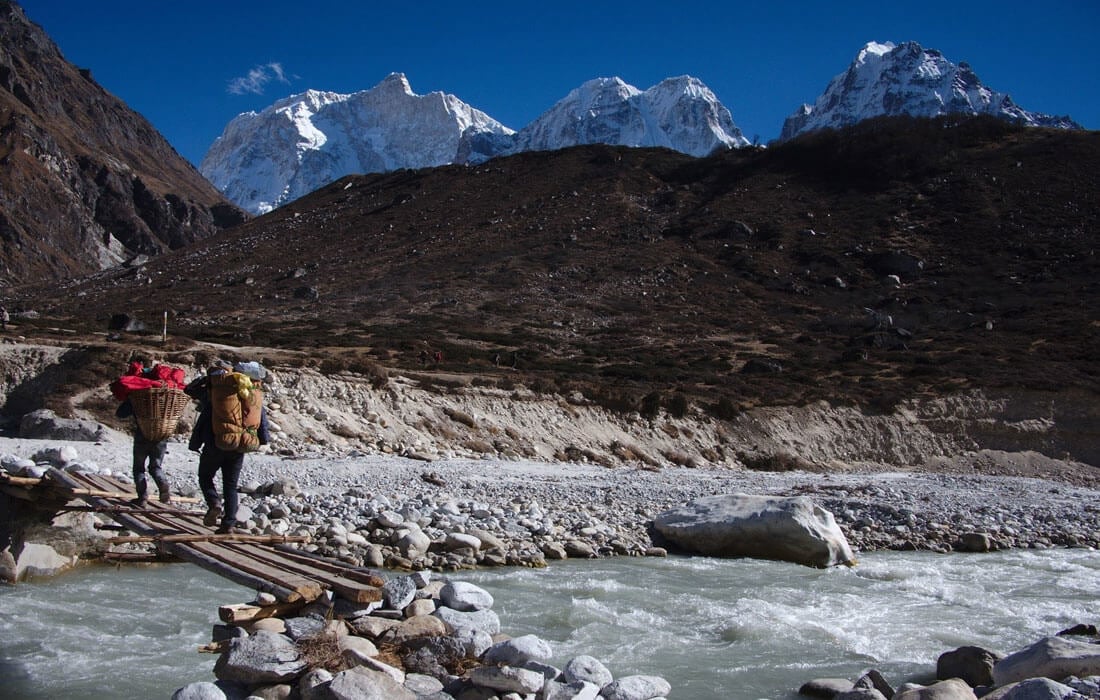 About this Trip
About this Trip
The Gokyo Lakes Trek represents a perfect balance of natural splendor, cultural richness, and adventurous challenge, offering a more tranquil alternative to the increasingly crowded Everest Base Camp route. What makes this trek extraordinary is its remarkable diversity of experiences within a single journey, each day bringing new wonders that build toward the ultimate reward of the turquoise lakes themselves.
The journey begins with the famous flight to Lukla, followed by a gradual ascent through the Dudh Koshi Valley, where traditional Sherpa villages, fluttering prayer flags, and ancient mani stones create a cultural tableau unchanged for centuries. As you climb higher, the landscape transforms dramatically from the lush rhododendron forests of the lower valleys to the stark alpine terrain of the upper Gokyo Valley, where the massive Ngozumpa Glacier dominates the landscape with its otherworldly terrain of ice, rock, and glacial pools.
The Gokyo Lakes themselves appear like sapphires set in a rugged mountain crown, their intense turquoise color created by glacial flour suspended in the meltwater. Each of the six main lakes has its own character, with the third lake (Dudh Pokhari) serving as the centerpiece where the settlement of Gokyo offers basic accommodations with million-dollar views. The sacred nature of these lakes in Sherpa and Tibetan Buddhist traditions adds a spiritual dimension to their natural beauty, with locals believing mountain deities reside in these pristine waters.
The ascent of Gokyo Ri delivers what many consider the ultimate Himalayan panorama, a 360-degree vista that includes four of the world's six highest mountains. Unlike the view from Kala Patthar on the traditional Everest trek, the perspective from Gokyo Ri reveals Everest in its full context, rising majestically among its neighboring giants, with the added bonus of the turquoise lakes glittering far below.
For those seeking an additional challenge, the crossing of Renjo La passes with an entirely different perspective of the region, looking back toward Gokyo and forward to new valleys and mountains that few trekkers explore. This optional extension transforms an out-and-back journey into a partial loop, adding both challenge and variety.
Throughout the trek, the relative solitude compared to the main Everest trail allows for more contemplative experiences and meaningful cultural exchanges in the villages along the way. The slightly higher physical demands of this route, including glacier crossings and optional high passes, create a sense of adventure and accomplishment that enhances every spectacular view and cultural encounter.
The Gokyo Lakes Trek represents a perfect balance of natural splendor, cultural richness, and adventurous challenge, offering a more tranquil alternative to the increasingly crowded Everest Base Camp route. What makes this trek extraordinary is its remarkable diversity of experiences within a single journey, each day bringing new wonders that build toward the ultimate reward of the turquoise lakes themselves.
The journey begins with the famous flight to Lukla, followed by a gradual ascent through the Dudh Koshi Valley, where traditional Sherpa villages, fluttering prayer flags, and ancient mani stones create a cultural tableau unchanged for centuries. As you climb higher, the landscape transforms dramatically from the lush rhododendron forests of the lower valleys to the stark alpine terrain of the upper Gokyo Valley, where the massive Ngozumpa Glacier dominates the landscape with its otherworldly terrain of ice, rock, and glacial pools.
The Gokyo Lakes themselves appear like sapphires set in a rugged mountain crown, their intense turquoise color created by glacial flour suspended in the meltwater. Each of the six main lakes has its own character, with the third lake (Dudh Pokhari) serving as the centerpiece where the settlement of Gokyo offers basic accommodations with million-dollar views. The sacred nature of these lakes in Sherpa and Tibetan Buddhist traditions adds a spiritual dimension to their natural beauty, with locals believing mountain deities reside in these pristine waters.
The ascent of Gokyo Ri delivers what many consider the ultimate Himalayan panorama, a 360-degree vista that includes four of the world's six highest mountains. Unlike the view from Kala Patthar on the traditional Everest trek, the perspective from Gokyo Ri reveals Everest in its full context, rising majestically among its neighboring giants, with the added bonus of the turquoise lakes glittering far below.
For those seeking an additional challenge, the crossing of Renjo La passes with an entirely different perspective of the region, looking back toward Gokyo and forward to new valleys and mountains that few trekkers explore. This optional extension transforms an out-and-back journey into a partial loop, adding both challenge and variety.
Throughout the trek, the relative solitude compared to the main Everest trail allows for more contemplative experiences and meaningful cultural exchanges in the villages along the way. The slightly higher physical demands of this route, including glacier crossings and optional high passes, create a sense of adventure and accomplishment that enhances every spectacular view and cultural encounter.

From $0
Price Varies from Group Size
Success
Here goes about why the success toast occurred.
 Itinerary
Itinerary
Arrival in Kathmandu (1,400m)
Kathmandu to Lukla (2,860m) to Phakding (2,610m)
Phakding to Namche Bazaar (3,440m)
Acclimatization Day in Namche Bazaar
Namche Bazaar to Dole (4,038m)
Dole to Machhermo (4,470m)
Machhermo to Gokyo (4,750m)
Gokyo Ri (5,357m) and Exploration Day
Optional Day Trip to Fifth Lake and Scoundrel's Viewpoint (5,000m)
Gokyo to Renjo La Pass (5,360m) to Lungden(4,380m)-optional
Lungden to Thame (3,820m) - Optional
Thame to Namche Bazaar (3,440m)
Namche Bazaar to Lukla (2,860m)
Lukla to Kathmandu
Departure from Kathmandu
 Services
Services
Includes
- Specialized bilingual guide experienced in the Gokyo region
- Private Transport where applicable
- Domestic flights between Kathmandu and Lukla
- Daily meals on the trek: breakfast, lunch, and dinner
- Services of an experienced guide and porter during the trek
- All essential trekking permits, including Sagarmatha National Park and TIMS
- Accommodation throughout the trek (teahouses and lodges)
Excludes
- Additional accommodation due to flight delays or cancellations in Lukla
- Comprehensive travel and medical insurance for the trek
- Gratuities for the guides, porters, and trekking support staff
- International flights and entry visa fees for Nepal
- Personal trekking equipment and gear (sleeping bags, jackets, etc.)
- Extra food and drinks beyond the standard meals provided
- Emergency evacuation and helicopter rescue (should be covered by insurance)
- Wi-Fi, charging, and hot shower fees at teahouses
 Good to Know
Good to Know
Train with cardio and uphill hiking for 2-3 months before departure. Pack for temperature variations from -10°C at night to +20°C during day. Bring micro spikes for potential icy conditions around passes. Acclimatize properly and never gain more than 400-500m sleeping elevation per day. Carry Diamox after consulting your doctor. Use water purification methods rather than buying plastic bottles. Expect basic facilities above Namche with limited electricity Bring sufficient cash as ATMs are unreliable beyond Namche Bazaar.
Wildlife Encounters
While trekking, keep an eye out for:
- Himalayan tahr (wild mountain goats), Musk deer (in forested regions of lower elevations), Snow leopard (extremely rare sightings in remote areas), Himalayan monal (colorful pheasant and Nepal's national bird), Himalayan snowcock (high-altitude game bird), Blood pheasant, Lammergeier (bearded vulture), Himalayan griffon, Golden eagles, Various alpine birds including choughs and snow pigeons, Pikas (small rabbit-like mammals), Marmots (in rocky areas)
 Reviews
Reviews
 Frequently Asked Questions
Frequently Asked Questions
Your queries are answered
What makes the Gokyo Lake special?
Gokyo Lake is the world's highest freshwater lake system and a Ramsar wetland site of international importance. Their striking turquoise color comes from glacial flour—fine rock particles suspended in the meltwater from the Ngozumpa Glacier. The lakes are considered sacred in Sherpa and Tibetan Buddhist traditions, believed to be the abode of deities. Environmentally, they represent a unique high-altitude ecosystem supporting specialized plants and animals.
Is it possible to combine Gokyo Lakes with Everest Base Camp?
Yes, many trekkers combine both destinations via the challenging Cho La Pass (5,420m), creating a circuit that showcases the best of the Khumbu region. This combined trek typically takes 18-21 days and requires excellent acclimatization and physical fitness. The crossing of Cho La involves some technical terrain that may require micro spikes or crampons, depending on conditions.
What is the best time of year for this trek?
Mid-October to November offers the clearest skies and most stable weather, ideal for mountain photography and views. March to May features spectacular rhododendron blooms at lower elevations and generally stable weather, though occasional pre-monsoon haze can affect distant views. December to February can be extremely cold with potential heavy snow at higher elevations, while the monsoon season (June-September) brings rain, leeches at lower elevations, and cloudy conditions that obscure mountain views.
What type of accommodation can I expect?
Teahouses along the Gokyo route offer basic but comfortable accommodation. In Namche Bazaar, facilities are relatively good with hot showers, varied food options, and sometimes WiFi. At higher elevations, especially in Gokyo and beyond, expect more basic conditions: unheated rooms (except for common dining areas), limited menu options, and basic toilet facilities. Private rooms are usually available, though shared accommodation might be necessary during peak season.
How do I prepare for high altitude?
Follow the itinerary's acclimatization days strictly, particularly in Namche Bazaar and Machhermo. Stay well-hydrated (3-4 liters daily), ascend slowly (no more than 400-500m in sleeping elevation per day), and immediately report any altitude symptoms to your guide. Consider discussing Diamox (acetazolamide) with your doctor before traveling. Physical fitness helps but doesn't prevent altitude sickness, so proper acclimatization remains essential regardless of your fitness level.
Is Gokyo Lake Trek suitable for solo trekkers?
Experienced trekkers familiar with high-altitude conditions can complete this route solo, as teahouses provide accommodation and food throughout. However, a local guide enhances safety, particularly for glacier crossings and in case of altitude sickness. Solo trekkers should always register their itinerary with their embassy and carry a satellite communication device due to limited cell coverage above Namche Bazaar.
What gear is specific to Gokyo Lake Trek?
In addition to standard high-altitude trekking equipment, bring microspikes for potential icy sections, especially if crossing passes. A good quality sleeping bag rated to at least -10°C is essential, as rooms are unheated at higher elevations. Trekking poles provide stability on moraine crossings, and a headlamp is necessary for pre-dawn summit attempts of Gokyo Ri. Water purification systems are important as bottled water becomes increasingly expensive and environmentally problematic at higher elevations.
How reliable is the Wi-Fi and phone connectivity?
Connectivity decreases dramatically as you ascend. Namche Bazaar has relatively reliable cell service and WiFi (for a fee), but beyond this, connectivity becomes sporadic. Machhermo and Gokyo may have limited WiFi available at extra cost, but it's typically slow and unreliable. Cell service is minimal above Namche. For those requiring connectivity, satellite communication devices are recommended.
What photography equipment is recommended for the Gokyo Lake?
A camera with wide-angle capabilities is essential for capturing the expansive mountain panoramas, while a medium zoom lens helps with wildlife and cultural photography. Bring extra batteries as charging facilities become limited and expensive above Namche, and cold temperatures drain batteries quickly. A lightweight tripod is valuable for low-light conditions during sunrise at Gokyo Ri, and polarizing filters help manage the intense high-altitude light and enhance the turquoise colors of the lakes.
How much should I budget beyond the package cost?
Beyond the package cost, budget approximately $15-25 per day for additional expenses. This covers extra snacks, hot showers ($3-5), Wi-Fi access ($3-8 per day), battery charging ($2-5 per device), and optional drinks like tea, coffee, or beer. Prices increase with altitude, with costs in Gokyo approximately double those in Namche Bazaar. Also budget for potential extra nights in Lukla or Kathmandu due to weather-related flight delays.
